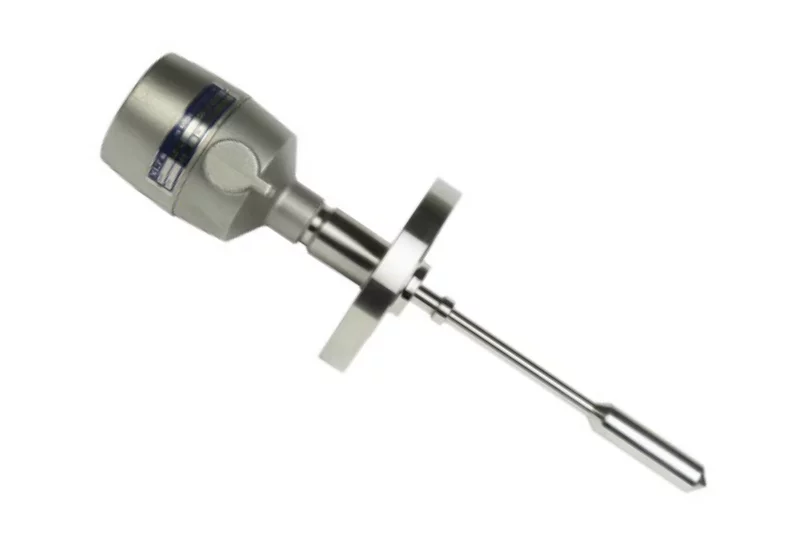-
Новости
- ИССЛЕДОВАТЬ
-
Страницы
-
Группы
-
Мероприятия
-
Reels
-
Статьи пользователей
-
Funding
-
Jobs
-
Courses
How Smart Viscometers Are Revolutionizing Industrial Automation

Introduction
The In Line Process Viscometer Market is growing steadily as industries increasingly adopt real-time viscosity measurement technologies to enhance production efficiency, product consistency, and quality control. In line process viscometers measure the viscosity of fluids directly within pipelines or processing lines, providing continuous and accurate monitoring without the need for manual sampling. These systems are crucial in industries such as oil & gas, chemicals, food & beverages, pharmaceuticals, paints, coatings, and petrochemicals, where fluid viscosity directly impacts product performance and process stability. As manufacturers prioritize automation, precision, and reduced waste, in line viscometers have become essential tools for optimizing process control and reducing production downtime. The integration of digital sensors, IoT connectivity, and smart analytics is further driving innovation and adoption across industrial sectors.
Market Drivers
Rising demand for consistent product quality is one of the primary drivers of the in line process viscometer market. Continuous viscosity monitoring enables real-time adjustments to formulation and process parameters, ensuring uniformity and compliance with quality standards. The increasing shift toward automation and Industry 4.0 manufacturing further accelerates adoption. In industries like oil & gas, accurate viscosity measurement is vital for flow assurance, fuel blending, and lubrication control. In the food and beverage sector, in line viscometers maintain texture, consistency, and stability in products such as sauces, creams, and beverages. Chemical and pharmaceutical industries rely on precise viscosity control for formulation and coating applications. Growing focus on energy efficiency and waste reduction also drives demand, as real-time monitoring minimizes product losses and reprocessing costs.
Market Challenges
High initial installation cost and complex integration with existing process systems pose significant challenges. Calibration and maintenance of viscometers in harsh industrial environments require technical expertise. Variations in temperature, pressure, and flow rate can affect measurement accuracy, demanding robust sensor designs and compensation mechanisms. Some fluids with solid particles or non-Newtonian properties are difficult to measure precisely, limiting viscometer performance in certain applications. Resistance to adopting new digital measurement systems persists in traditional industries reliant on manual or offline testing. Additionally, competition from cheaper, portable viscometers and viscosity testing methods can impact adoption among small-scale manufacturers. Data standardization and interoperability with industrial control systems are ongoing challenges for large-scale deployment.
Market Opportunities
Technological advancements in digital sensors, microprocessors, and data analytics are creating significant opportunities for smart in line viscometers. Integration with IoT and cloud platforms allows remote monitoring, predictive maintenance, and process optimization. The rise of automated process control in chemical, pharmaceutical, and food manufacturing creates demand for connected and self-calibrating viscometers. The oil & gas sector offers growth potential for high-temperature and high-pressure viscometers for refinery and pipeline applications. Compact and modular viscometers suitable for smaller production lines can cater to SMEs. Innovations in non-intrusive ultrasonic and electromagnetic viscometers open opportunities for maintenance-free measurement. Additionally, emerging applications in biofuels, renewable energy, and advanced materials manufacturing are expanding market reach.
Regional Insights
North America leads the In Line Process Viscometer Market, driven by advanced manufacturing, oil refining, and chemical processing industries in the U.S. and Canada. Europe follows closely, supported by strong food & beverage, pharmaceuticals, and paints & coatings sectors in Germany, the UK, France, and Italy. Asia-Pacific is witnessing the fastest growth, driven by industrial automation, expanding chemical production, and food processing industries in China, Japan, South Korea, and India. China’s large-scale manufacturing and energy industries offer substantial demand potential. The Middle East shows rising adoption in oil & gas processing, while Latin America and Africa are gradually integrating in line viscometers in refineries, mining, and food industries.
Future Outlook
The future of the In Line Process Viscometer Market will be shaped by digital transformation, smart manufacturing, and sustainable production practices. AI-based viscosity control and predictive analytics will enable autonomous process adjustments and quality optimization. Wireless viscometers with edge computing capabilities will support decentralized industrial monitoring. Advances in corrosion-resistant materials and self-cleaning sensors will improve operational life and reduce maintenance costs. The integration of in line viscometers with digital twins and automated feedback loops will enhance process transparency and control. Over the next decade, real-time viscosity monitoring will become a standard component of modern manufacturing lines, ensuring greater consistency, efficiency, and cost savings.
Conclusion
The In Line Process Viscometer Market is expanding as industries focus on automation, efficiency, and real-time quality control. While high setup costs and integration challenges remain, technological advancements in digital sensors, IoT connectivity, and predictive monitoring are transforming process management. In line viscometers are becoming indispensable tools for achieving product uniformity, reducing waste, and optimizing industrial performance. Manufacturers that innovate in smart, durable, and user-friendly designs will maintain a competitive edge. As industries move toward data-driven operations and precision manufacturing, in line process viscometers will play a vital role in enabling smarter, cleaner, and more efficient production systems.
- Art
- Crafts
- Dance
- Wellness
- Movie & Television
- Adult Entertainment
- Fitness
- Food
- Игры
- Gardening
- Health
- Главная
- Literature
- Music
- Business & Finance
- Religion
- Shopping
- Sports
- Theater
- Drinks
- Другое



